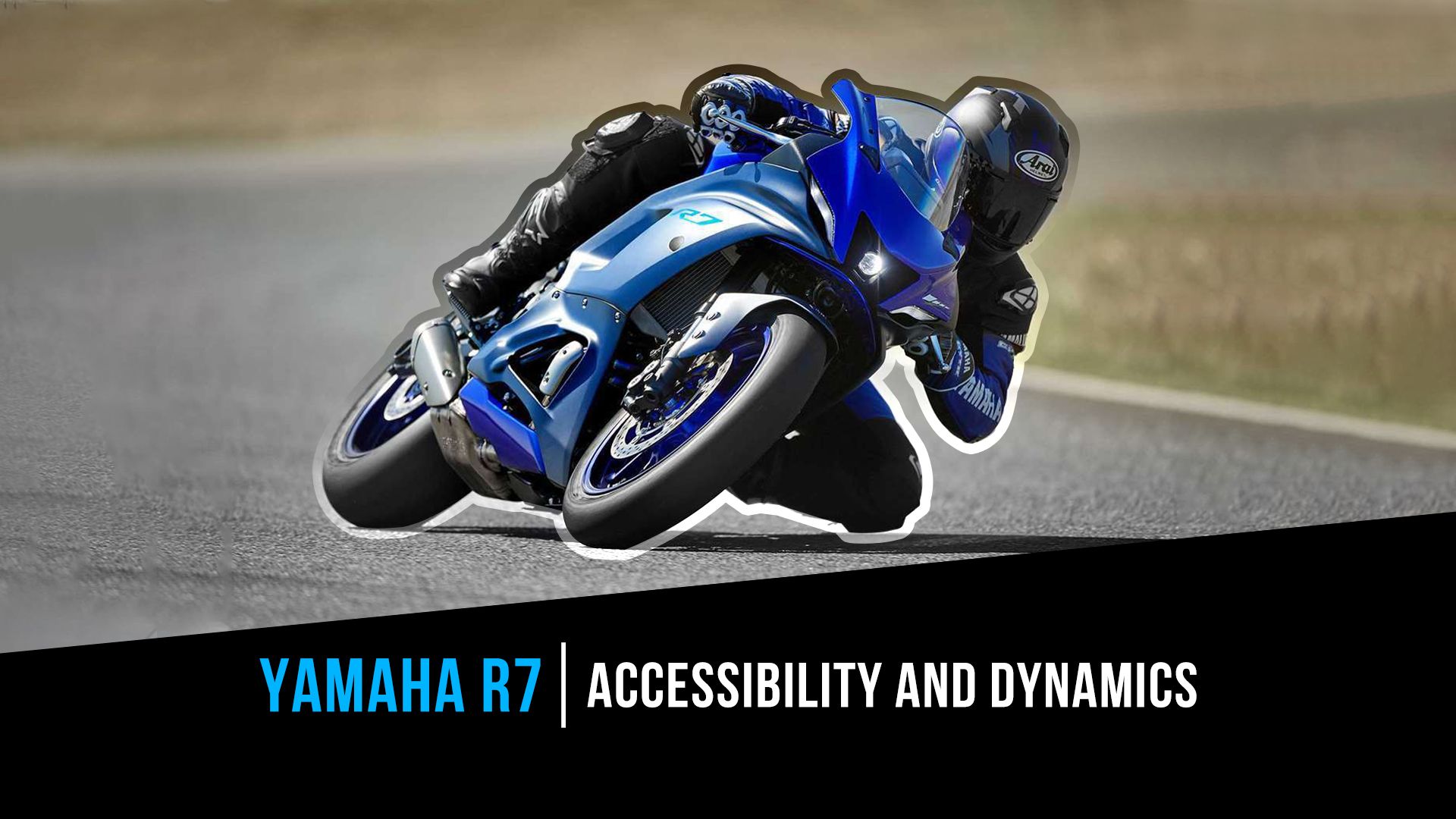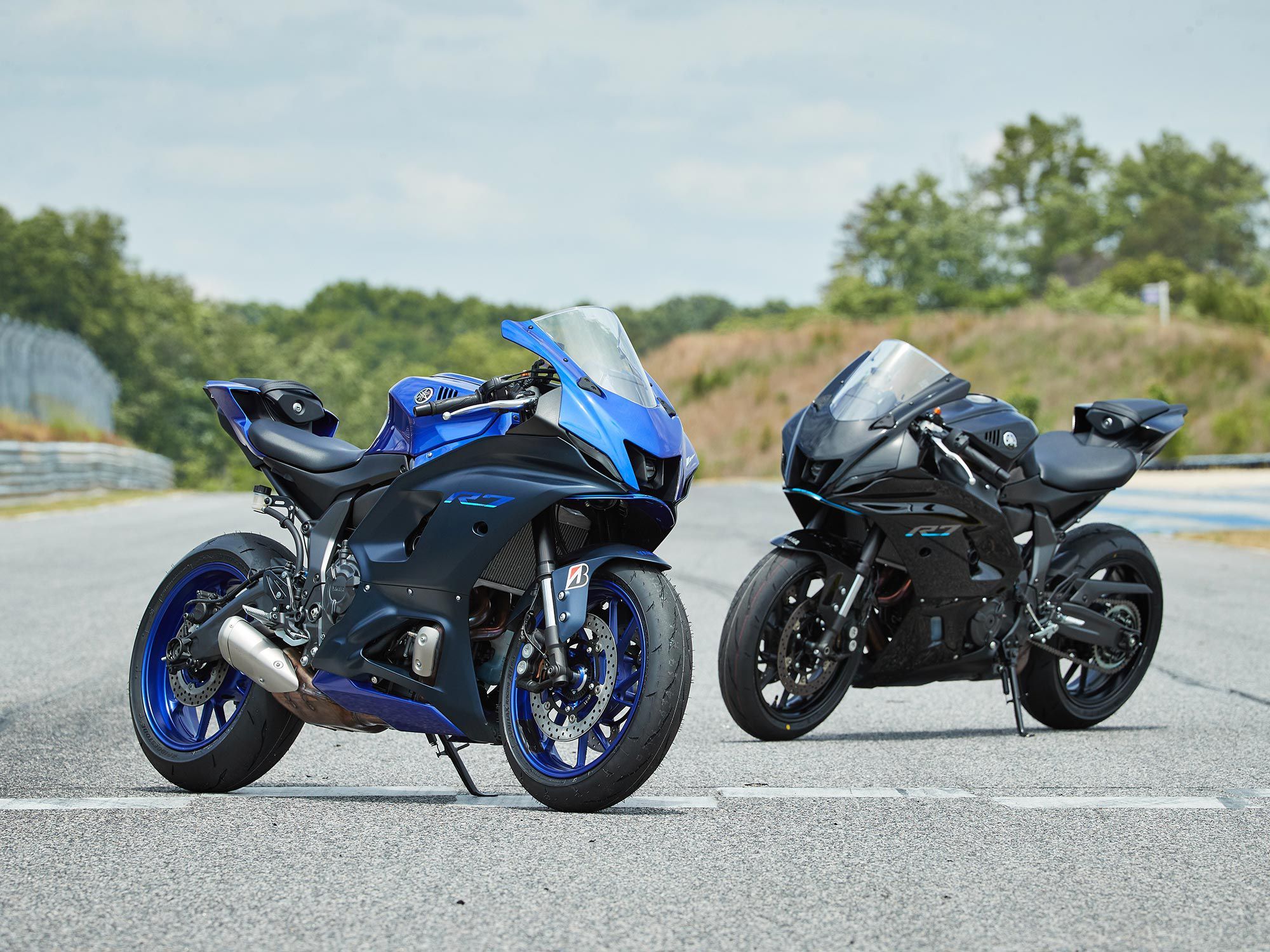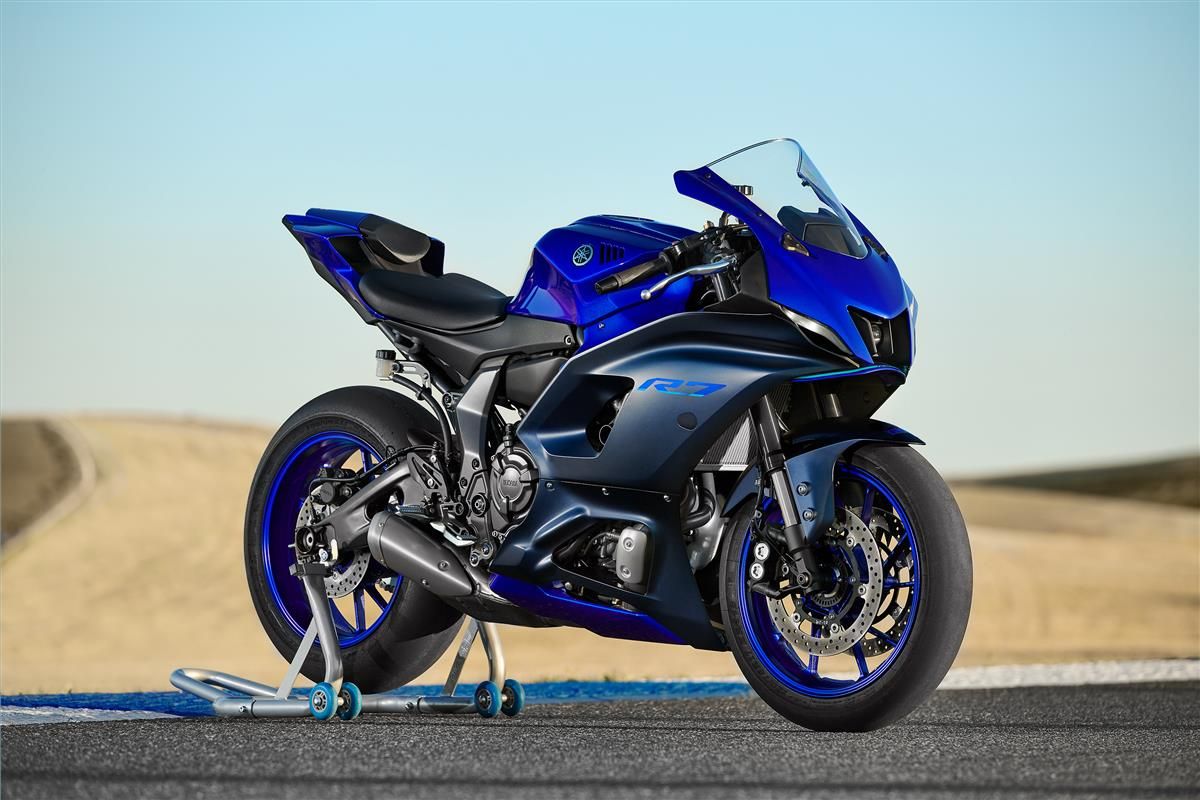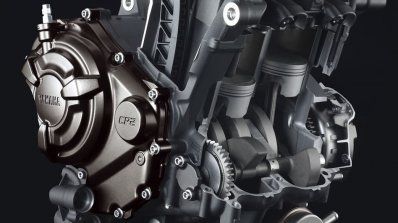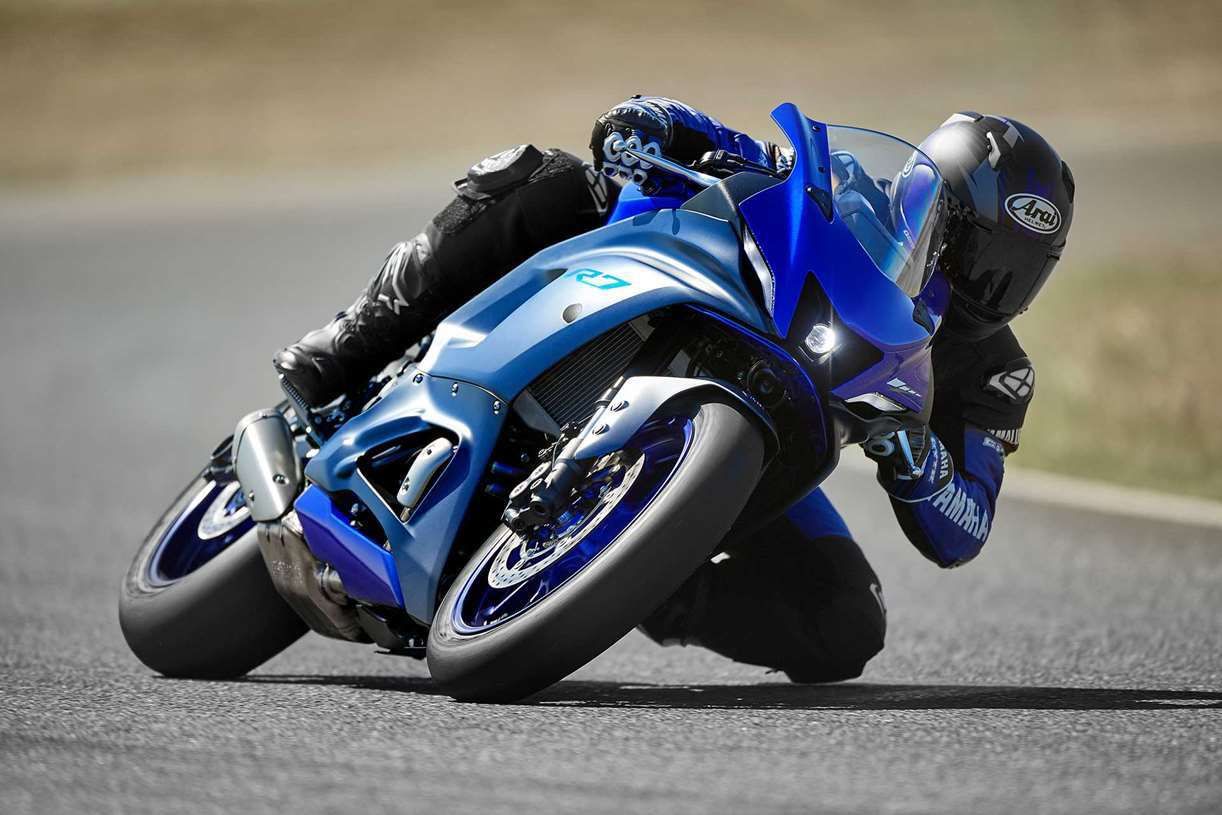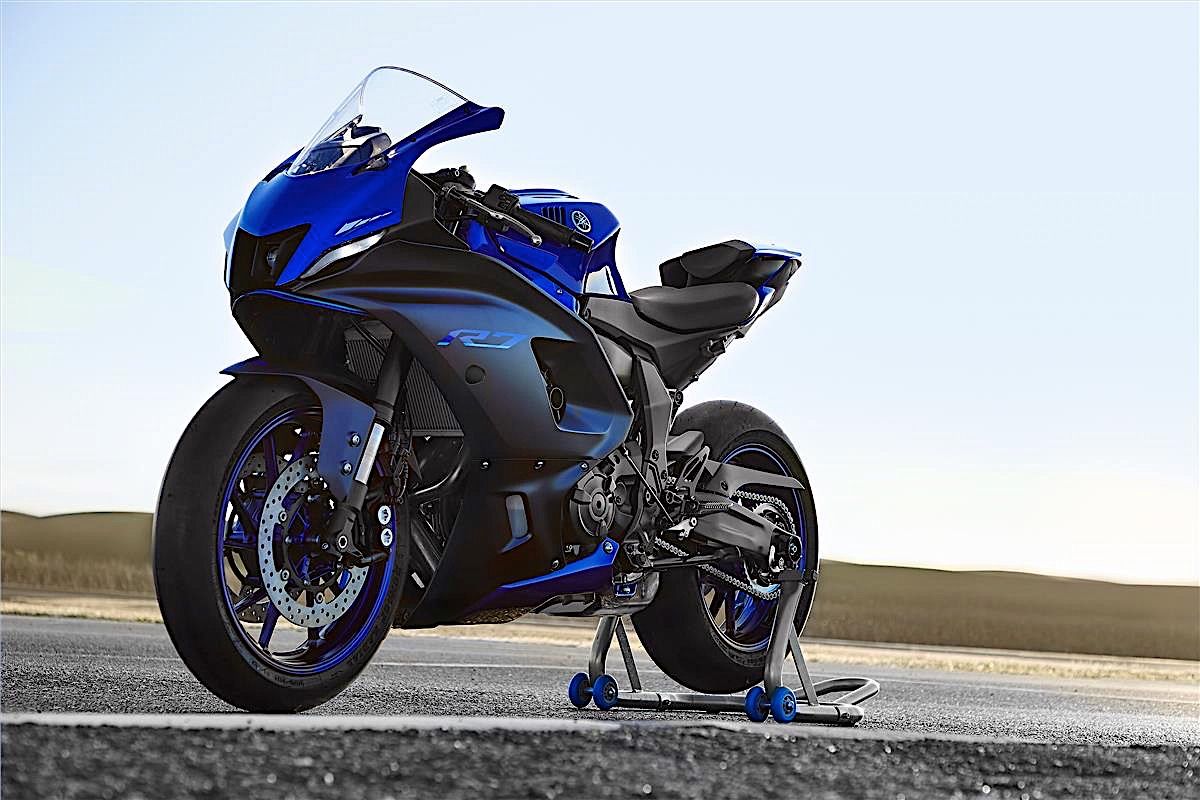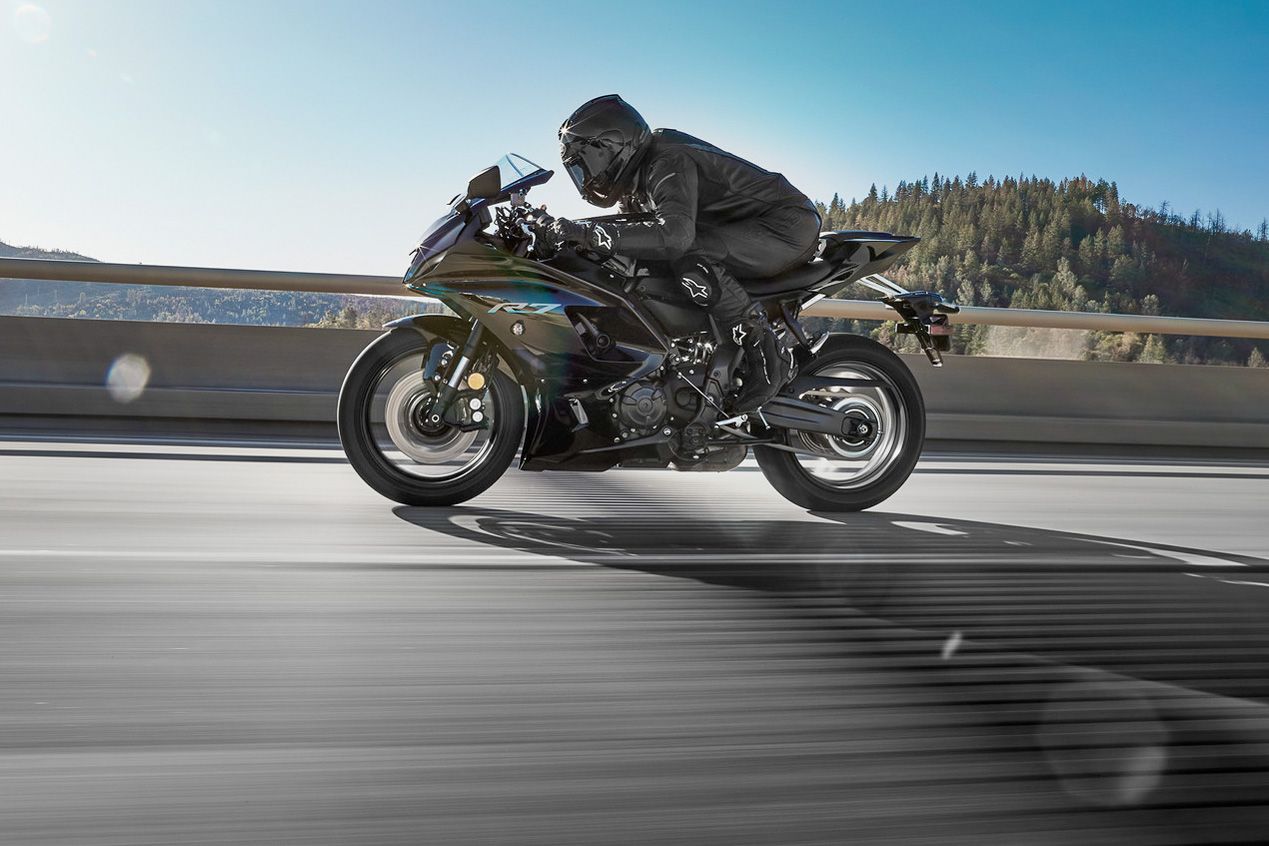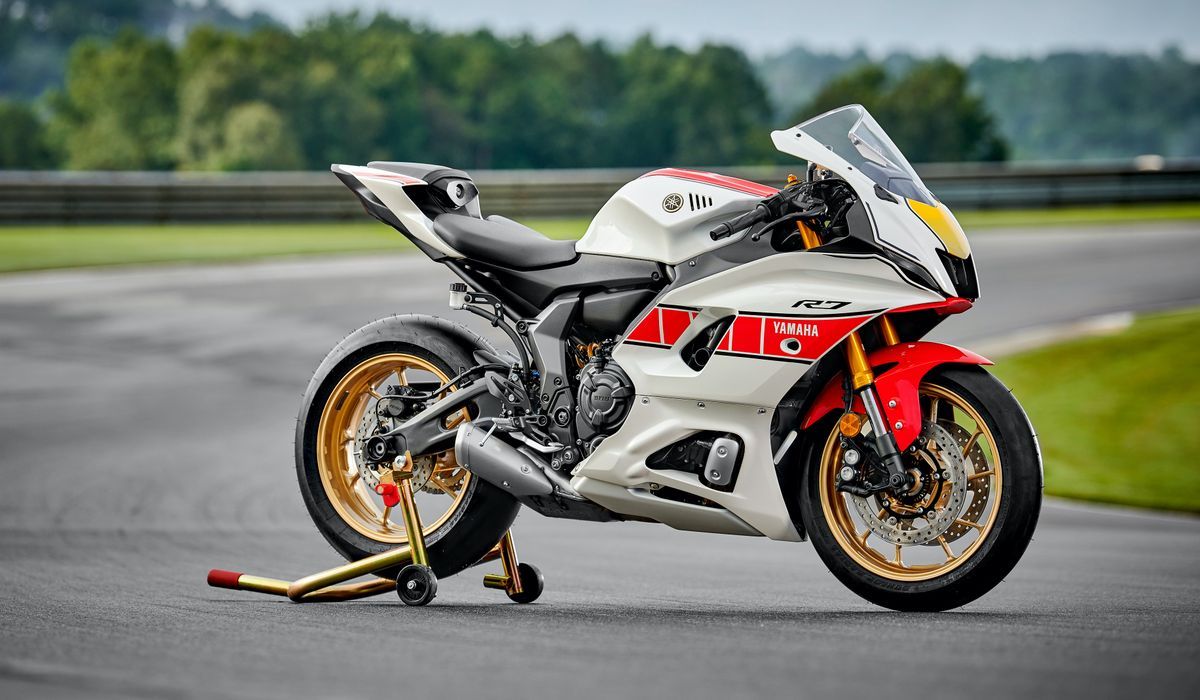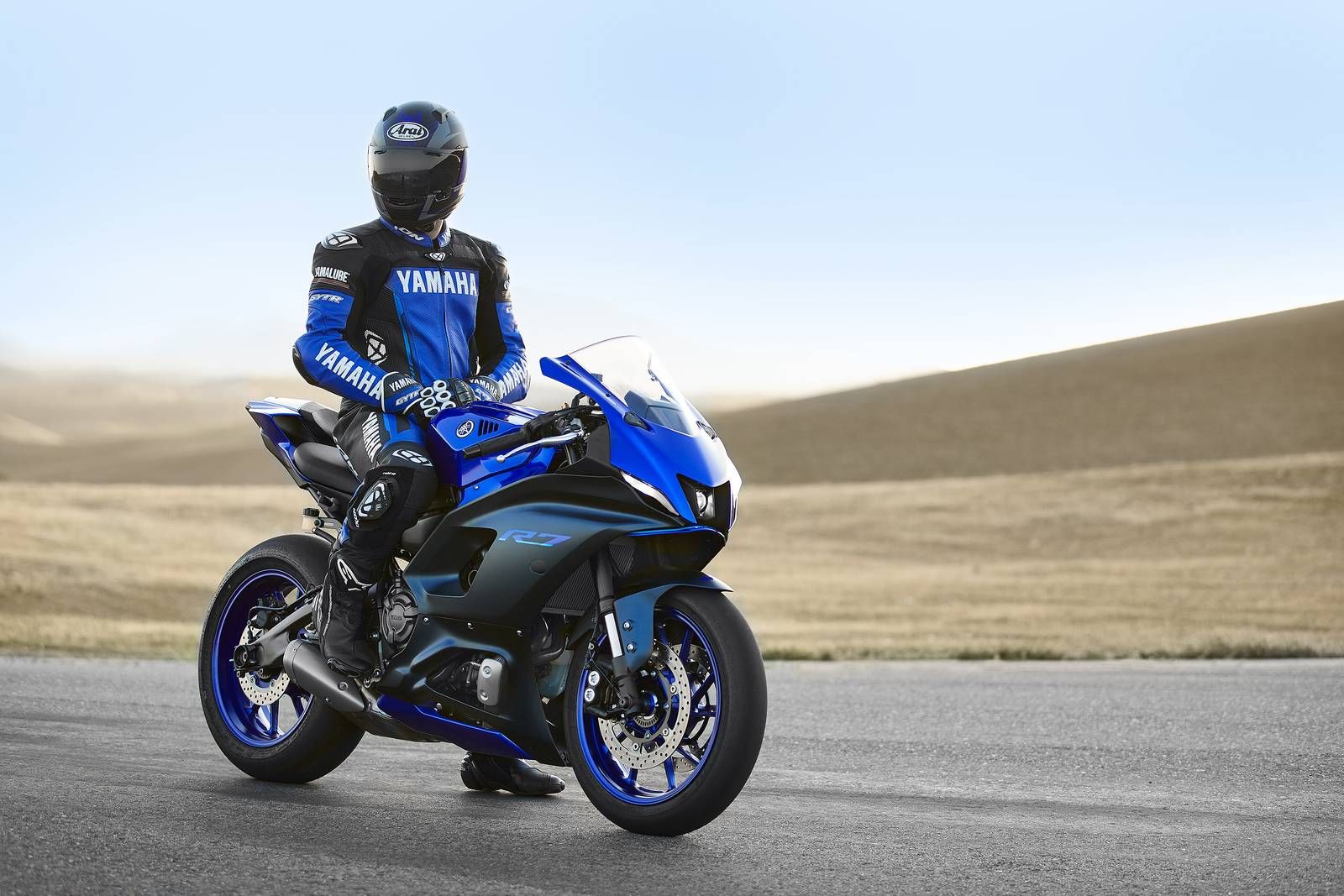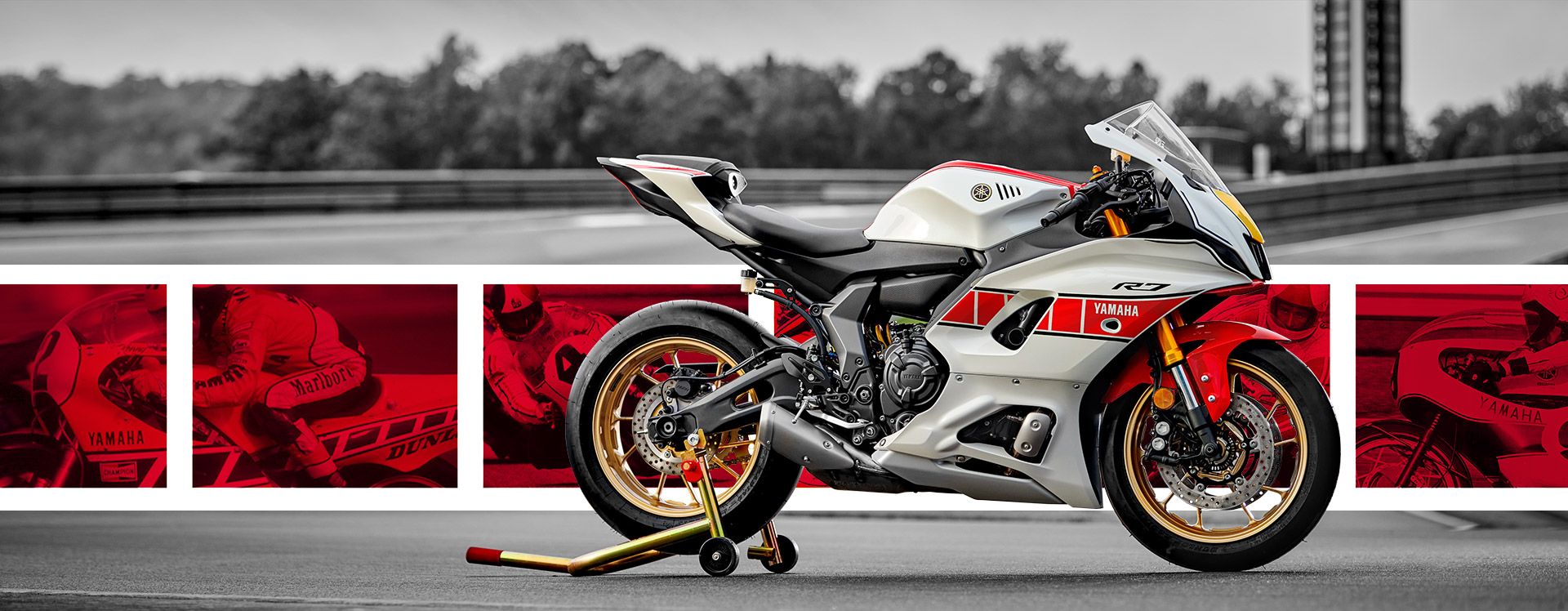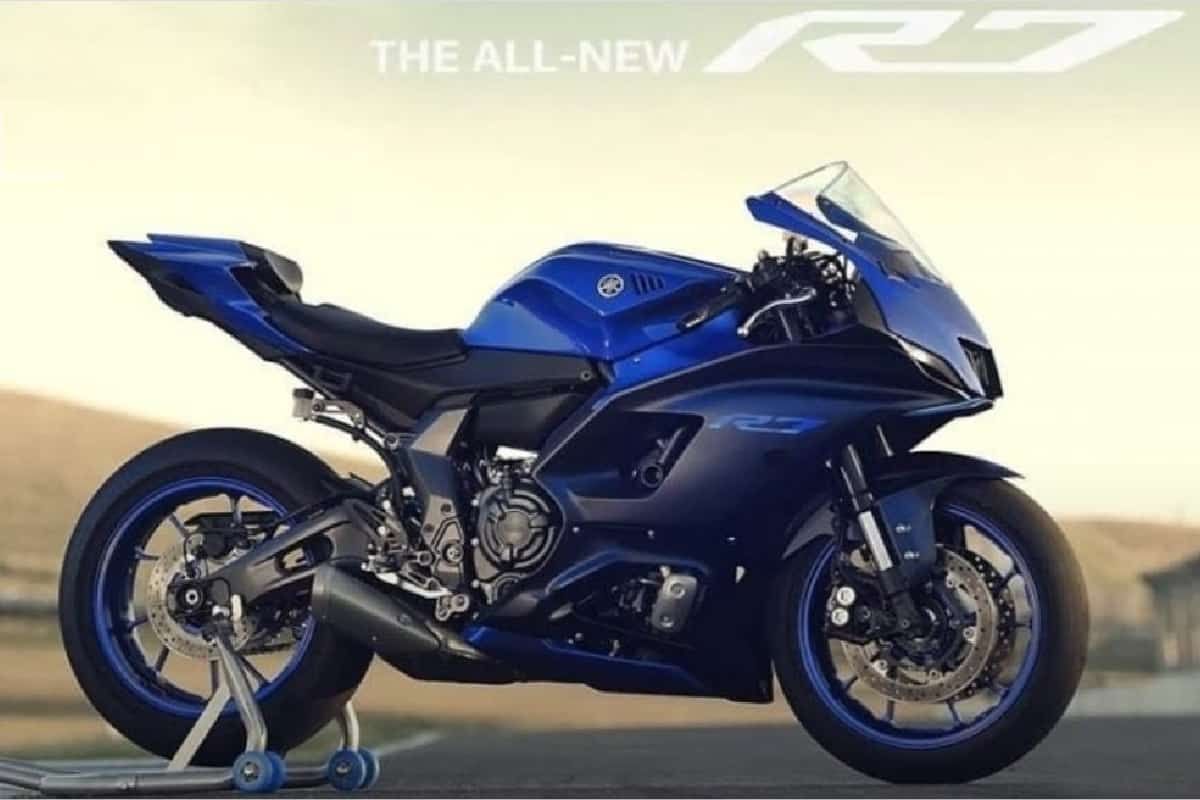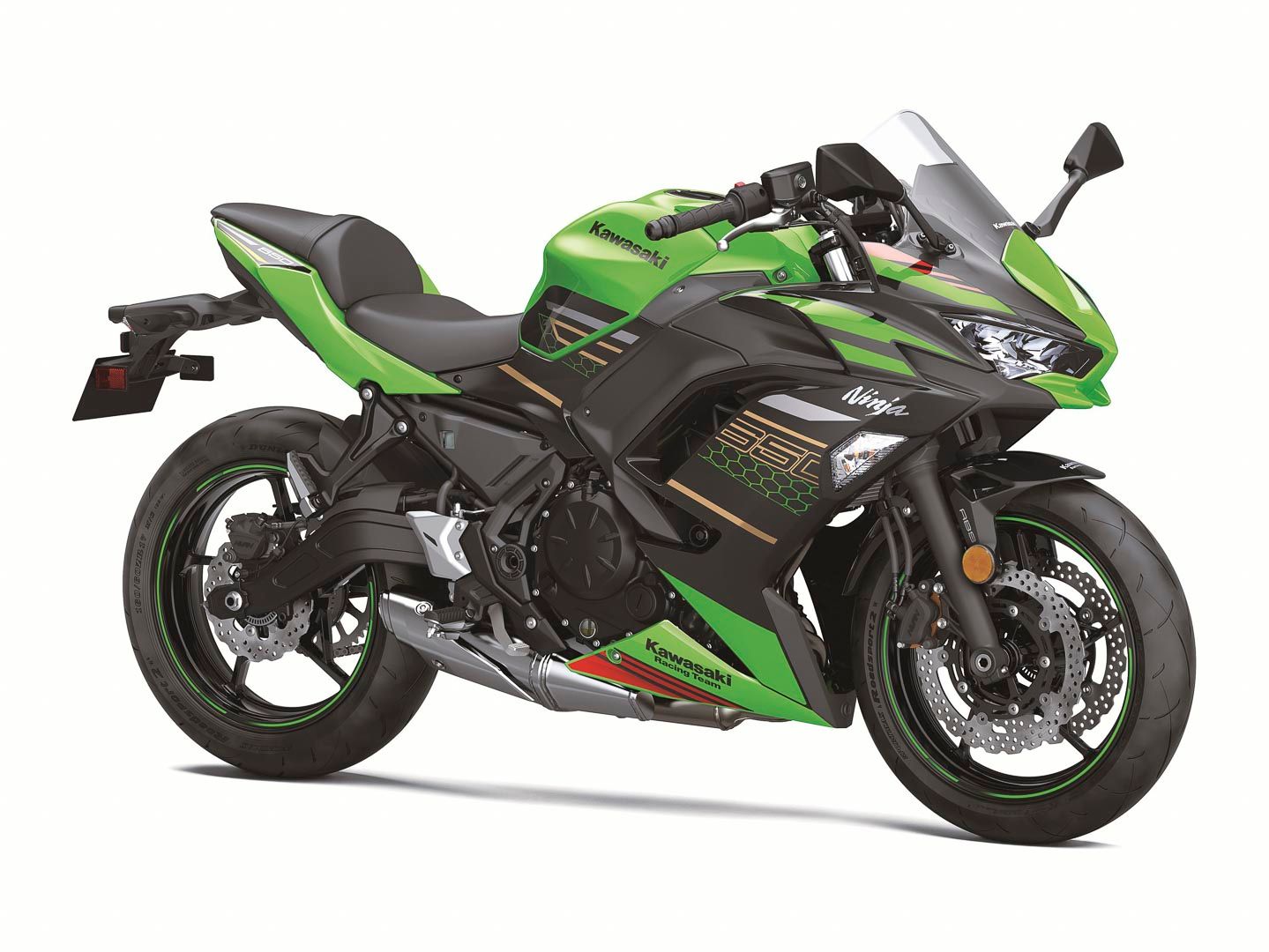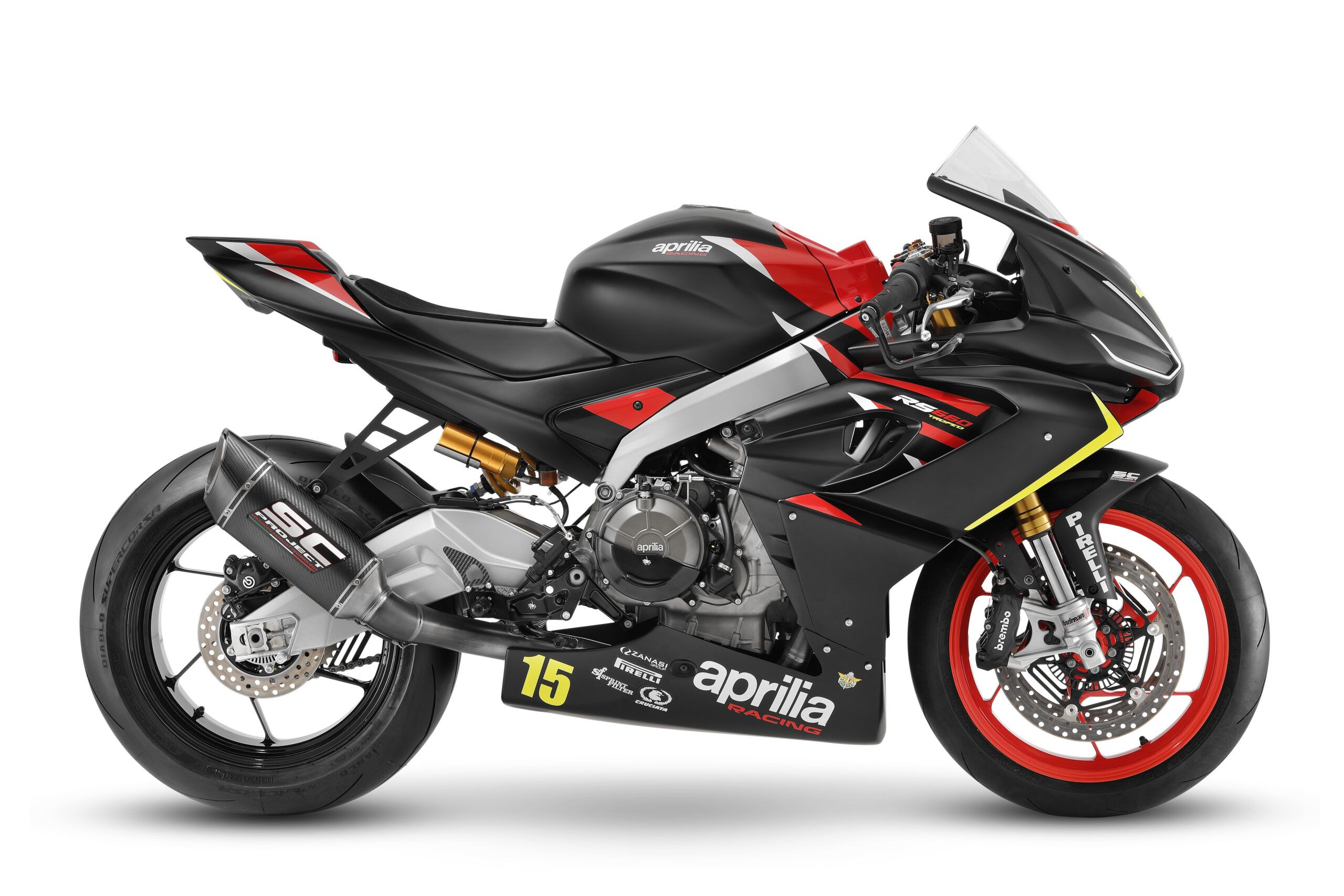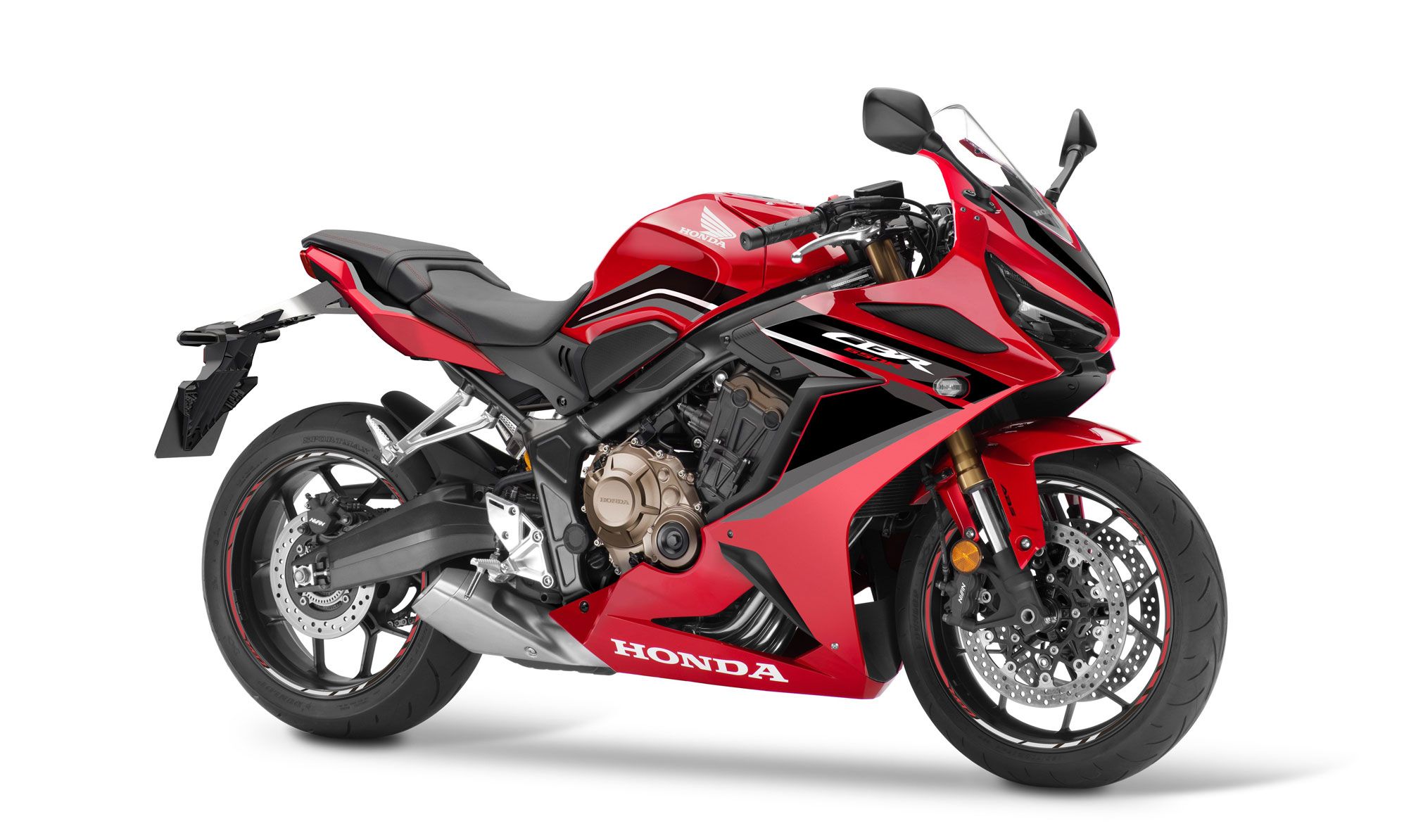When the YZF-R6 Yamaha became a track-only sports bike, it looked as if Yamaha was abandoning the middleweight sports bike category for good. In actual fact, the company had plans to not only continue in the category but also make the resulting sports model much more accessible to a wider audience. Using the adaptable MT-07 mechanical package, the YZF-R7 is the perfect combination of accessibility and dynamics.
The R7 Fills a Huge Gap in Yamaha’s Lineup
Yamaha builds both the 300cc R3 and 1000cc R1 but, since the demise of the road-going R6, there has been a huge vacuum in the line-up that was just too obvious.
If Yamaha fans were worried about this, they shouldn’t have been. Yamaha clearly saw the problem and had a solution in hand. That solution was to adapt the increasingly flexible MT-07 platform into a faired sports bike. While the resulting R7 might have lacked the fireworks and screaming redline of the R6 with its inline four-cylinder engine, it was nevertheless a much more affordable, accessible, stylish and dynamic machine that was almost the opposite of the traditional superbike that has become increasingly uncompromising, cramped, powerful and expensive.
Using the MT-07 Platform Saves On Costs
By adopting a modular approach to the design of the MT-07, Yamaha was able to produce multiple models on the platform - so far there have been naked, retro, touring and adventure versions - which not only saves Yamaha money that they can spend on more projects, but also means that the resulting R7 sports bike will be a lot cheaper on dealers showroom floors.
Because Yamaha can make components work across a large number of motorcycles, that means that the price of spares can be reduced due to the economies of scale.
The Engine
Yamaha has built some impressive engines in recent years. The three-cylinder engine used in the MT-09 is a brilliant unit, full of power, torque, and character.
The engine in the R7 is the 689cc parallel twin engine as found in the MT-07 and produces 72 horsepower and 49 pound-feet of torque. If this sounds a little underwhelming for a sports bike, it’s still lively and punchy enough to plaster a huge grin on your face whether on the road or track and a top speed of 130mph is certainly not slow.
The crankshaft has its crankpins spaced at 270° which give the engine the exhaust note of a v-twin, while a balancer shaft keeps things remarkably smooth. The torque curve is flat and, while the engine might lack the insanity of a 1000cc, 200 horsepower superbike motor, it makes up for it in usable power.
The six-speed gearbox is equipped with an assist-and-slipper clutch for a lighter lever action and to prevent rear-wheel hop when braking and down changing hard into corners.
Corner Speed is Everything
Anyone can go fast on a straight but it’s when the curves start that the men are separated from the boys. The problem with the likes of the R1, CBR-1000RR, ZX-10R, and so on, is that they can achieve such ridiculously high speeds on the straight that you’ll be needing all the stopping power to make it through the following turn.
What the R7 lacks in straight-line speed it more than makes up for in the turns: simply put, the R7 has a huge appetite for corners: the chassis is brilliant and gives so much feedback and confidence that you will continuously find yourself braking too hard for corners until you learn to carry so much more speed. It's a brilliant way of annoying the riders of $30,000 superbikes at a track day! As you swarm all over them in the turns after they got away from you on the straight.
There’s Nothing Soft About It
Being based on the MT-07 platform, you would be forgiven for thinking that the R7 could be a bit too much of a soft compromise for a sports bike. In actual fact, the riding position, while not being as extreme as liter-superbikes, is close to that of the outgoing R6 than the MT-07.
Some might say that it is ideal for the older sports bike rider for whom a liter-superbike is now too extreme for their aching bodies to fold into but, in actual fact, the R7 is a brilliant way for younger sports bike fans to get onto a pukka sports bike: one that could have been built specifically for them, something that hasn’t happened in years.
The handlebars are mounted lower than those of the MT-07, to put more weight over the front wheel to help with sharper turn-in, and the footpads are mounted higher to give more cornering ground clearance, but the riding position never feels cramped. Even better the R7 has a decently-padded seat and good mirrors, and when was the last time you said that about a sports bike?
Brakes and Suspension
Front forks on the R7 are by KYB and feature full adjustability, with rebound dealt with in the right fork leg and compression in the left leg. The top yoke is cast aluminum and the bottom yoke is forged aluminum. The rear shock has preload and rebound damping adjustment.
The front brake calipers each have four pistons, a Brembo master cylinder, and ABS is fitted as standard. The wheels are the lightweight, ten-spoke cast wheels from the MT-09 and come with Bridgestone sports tires.
What About Electronics?
Simply put, there aren’t any! There’s ABS but no traction control (great for wheelies!), no rider modes, no launch control or wheelie control, no six-axis IMU giving cornering ABS and a quick-shifter is only an option: not much at all. Even better, there’s a full-color TFT dash through which not to control it all!
Accessories Galore
Surprisingly, you can take your R7 in two different directions with the accessories catalog.
Firstly - and most obviously - you can go the race-bike direction, with race bodywork, suspension, ECU, wiring harness, brakes upgrades, and so on.
More unexpectedly, there are also more practical options, including soft panniers and tank bags to give the R7 a touring capability not normally associated with sports bikes. OK, so you might need wrist braces and a coupon for an osteopath after 1,000 miles non-stop, but what price for 1,000 miles of fun?
Three Colours
The Yamaha R7 comes in either Yamaha racing blue or full black liveries and both look brilliant, matching the aggressive lines of the bike perfectly. There is also the 60th Anniversary red and white livery which looks just spectacular and will make you feel exactly like Kenny Roberts.
Take Your Pick
If you are looking for a middleweight sports bike, your choice is fairly limited these days. The parallel-twin-engined Kawasaki Ninja 650 is cheaper ($8,299 with ABS) but lacks the bite of the Yamaha.
The similar-engined Aprilia RS660 is brilliant but a lot more expensive at $11,599.
The Honda CBR650R is the only bike in the category with an inline four-cylinder engine and costs $9,799 but it, too, lacks the sharpness of the Yamaha.
The Yamaha comes in at $8,999 but consider this. If you are after a track-focussed bike you have two choices. First, you could go for a used R6, which will, in all likelihood, have lead a hard life, been poorly serviced and maintained, and could have crashed its heart out. It will provide thrills but at what long-term cost?
Or, you can go for the Yamaha R7. Brand new, out-of-the-box reliability and warranty with epic road and track manners. Maybe not as fire-breathing as the R6 but it will probably teach you more about maintaining corner speed than any other bike that isn’t a 300cc sports bike.
FAQ
Q: How much does an R7 cost?
The Yamaha R7 costs $8,999 but this price can be raised significantly if the parts catalog is dipped into, especially for track-orientated accessories.
Q: Is the Yamaha R7 fast?
In terms of sports bikes, the R7 isn't spectacularly fast in terms of outright straight-line speed. where it does score is in its corner speed which, thanks to the chassis, is excellent.
Q: Is Yamaha R7 a beginner bike?
Not really, although it is a lot more accessible than a liter superbike. But you'll still need a full motorcycle license or restrict the power if you are riding in Europe on a learner license.
Q: Is the R6 or R7 faster?
The R6 will be a faster bike due to producing more power but it is harder to ride well.

